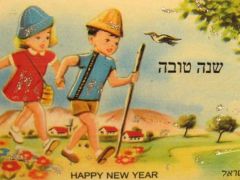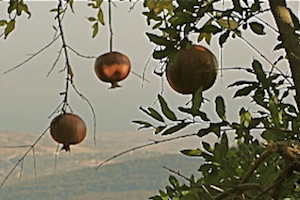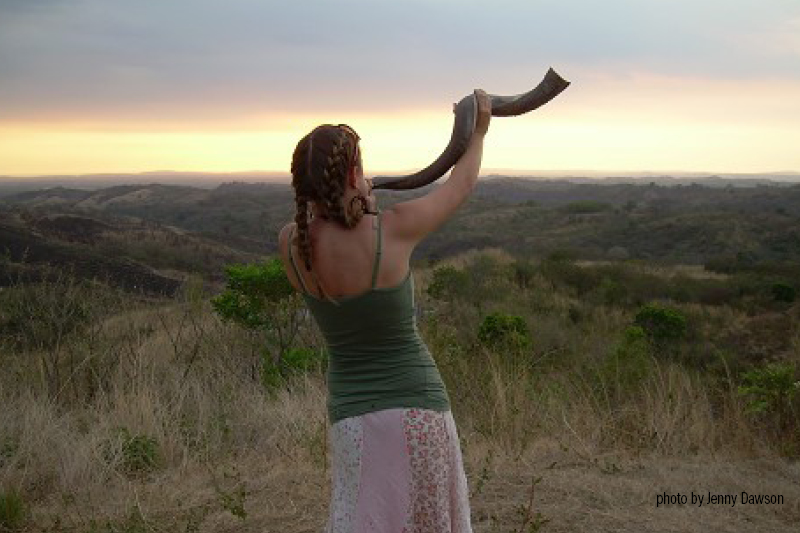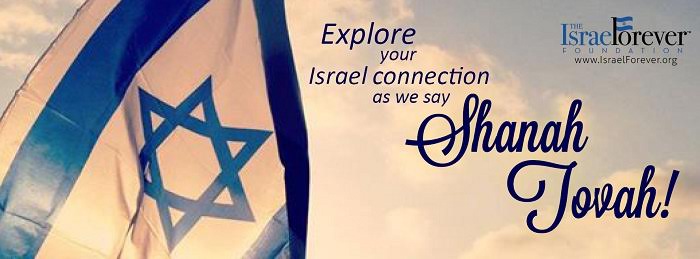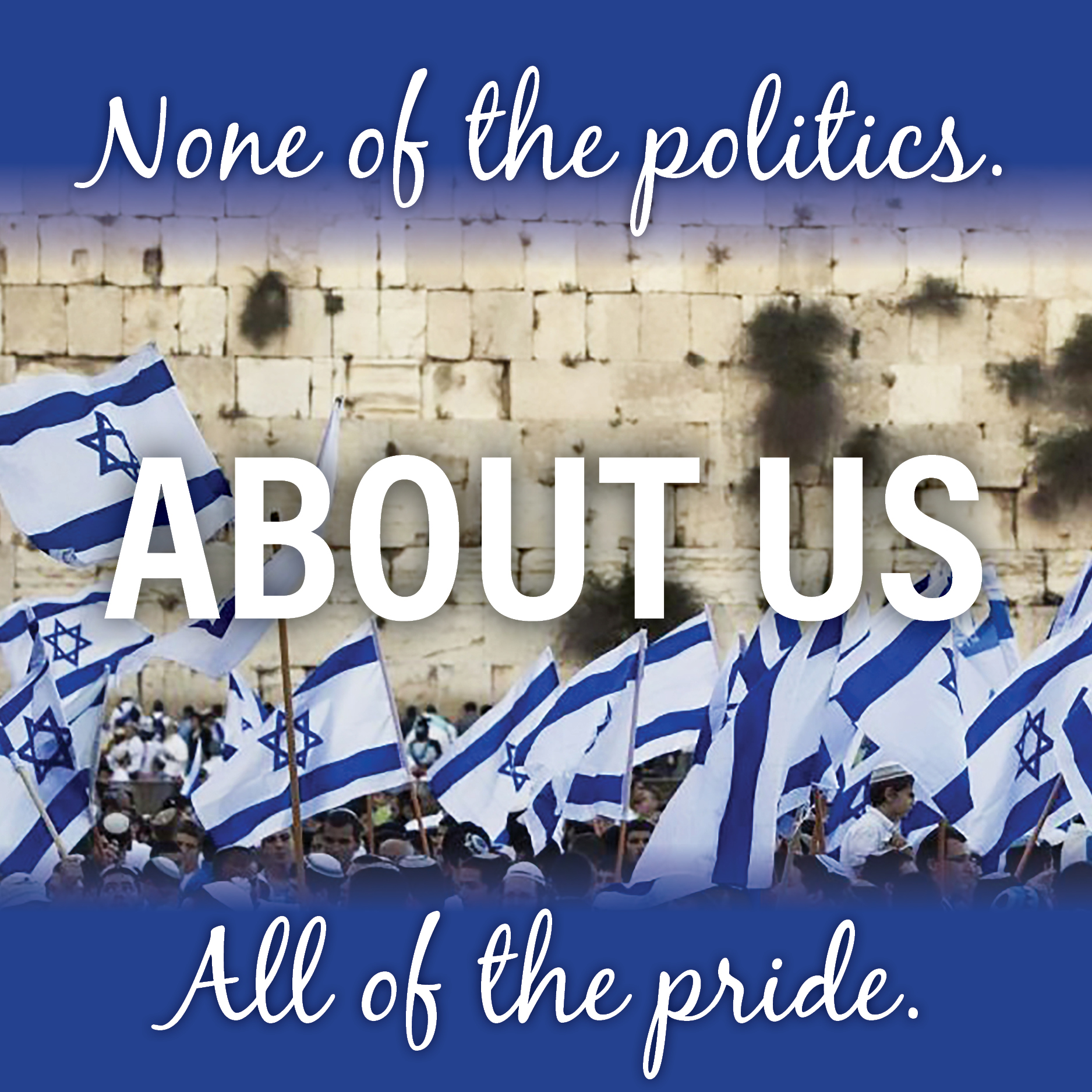How Kibbutz Pioneers Marked Rosh Hashanah
Bialik And Kipling, But No God
By Matti Friedman
Carefully catalogued in a room on a kibbutz in northern Israel are thousands of prayers, songs, poems and plays that cover the better part of a century of Jewish holiday celebrations but are entirely uninterested in God, rabbis or law.
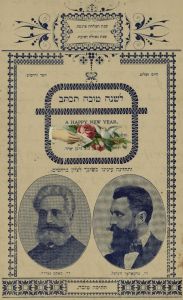
A small institute on Kibbutz Beit Hashita contains the remnants of what many once hoped was the Judaism of the future – the secular religion of the kibbutz, a Jewish culture of agriculture, workers and the Land of Israel.
This religion thrived in communal settlements all over the country in the heyday of the kibbutz movement, but has been mostly forgotten as the fortunes and self-confidence of the kibbutz idea have waned.
The Kibbutz Institute for Holidays and Jewish Culture, which began with documents stored in a milk crate under a worker’s cot 70 years ago, preserves the traditions of the deeply spiritual socialists who were responsible, more than any other single group of people, for creating the state of Israel. But the institute is not an exercise in nostalgia.
The desire among Israelis for a communal Judaism that is not Orthodoxy is more acute than ever, the staff here believes — and some of those searching for a new secular Jewish culture might find inspiration in the old dining halls and meeting rooms of the kibbutz movement and in ceremonies like the unique Rosh Hashanah services documented here.
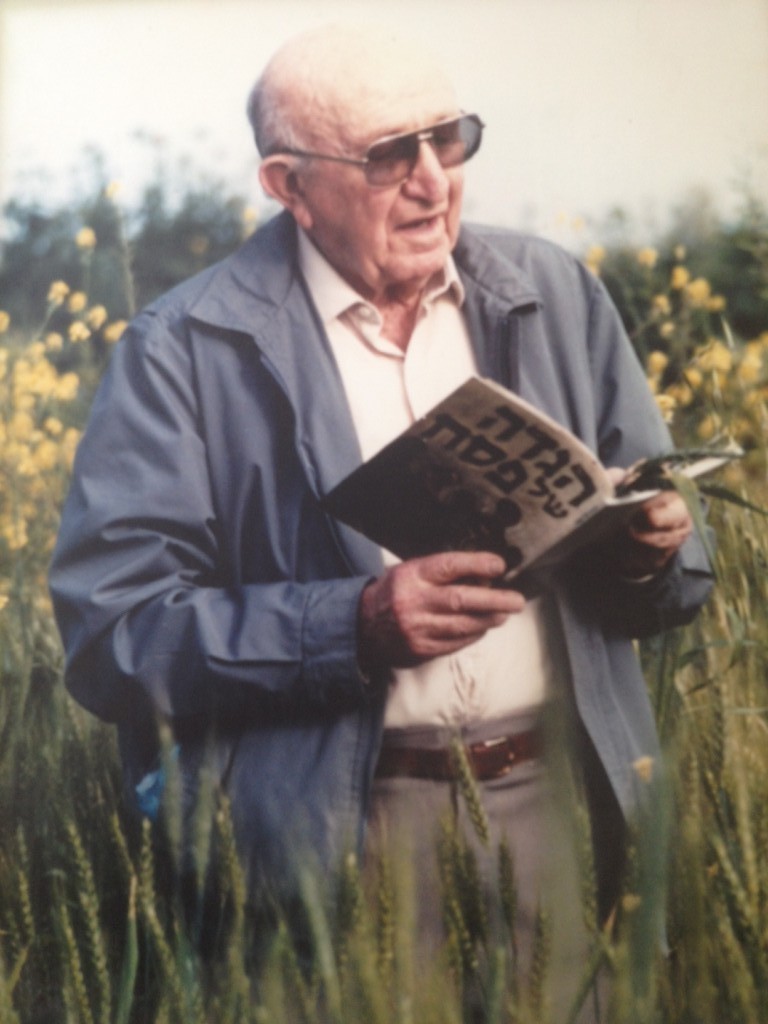
Aryeh Ben-Gurion, nephew of Israel’s first prime minister and collector of kibbutz traditions Photo credit: Courtesy of the Kibbutz Institute for Holidays and Jewish Culture
The institute began with Aryeh Ben-Gurion, nephew of Israel’s first prime minister. Ben-Gurion arrived in 1939 at Beit Hashita, a cluster of low buildings on a small rise opposite the Gilboa range not far from the town of Beit She’an.
When the community’s first children were born and the settlers discussed how they would be raised, Ben-Gurion became interested in how earlier pioneers had marked the Jewish holidays.
The kibbutzniks were nearly all from traditional Jewish homes, and though they had no use for rabbinic Judaism or God they remained deeply connected to Jewish culture and were seeking not to simply discard the old traditions but to replace them with new ones.
Ben-Gurion spent time at other kibbutzim in the area, places like Beit Alfa and Ein Harod, interviewing older members, collecting traditions and cataloging them in a crate that he kept underneath his bed. Eventually, he published compilations of traditions, booklets for holidays, and a new Passover Haggadah that is still in use. The milk crate became a room, then a cluster of rooms, and today the institute occupies part of an old kibbutz school building. He died in 1998.
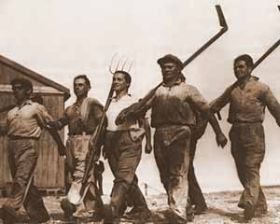
“For the first pioneers Judaism was very important, in addition to the ideology of returning to the land of the Bible, working the fields, agriculture, socialism, and humanistic values,” said Mordy Stein, one of the teachers at the institute. “In essence, they were creating the new Jew – the old Jew, the Diaspora Jew, was what they were rejecting, and they rejected Diaspora religion because it represented the old Jew.
“They didn’t want rabbinic Judaism, because they identified it almost mathematically with Exile. They wanted new ways of expressing Jewish values and holidays according to their new understandings about the new Jew, so they started to create traditions that were much closer to the biblical concept, the agricultural concept, the natural feeling of a Jew living in the land of Israel on the land, which had been forgotten over 2,000 years,” Stein said.
Kibbutz holidays were always centered on the community, rather than the family. They were marked together in the dining hall or on the grass, with the participation of adults and children. The ceremonies drew on Jewish texts, on new Hebrew writing and on universal literature.
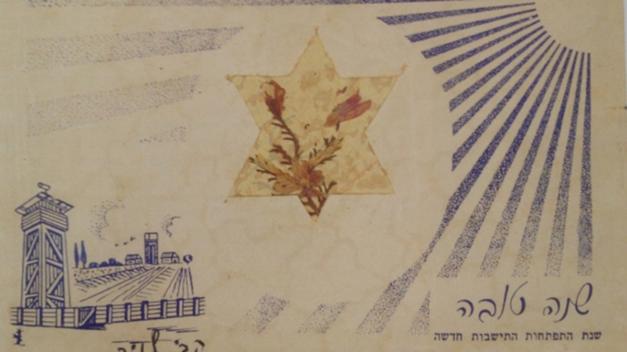
A Rosh Hashanah card from the 1940s. The text reads: "Happy New Year -- A Year of the Development of New Settlement" (Photo Credit: Courtesy of the Kibbutz Institute for Holidays and Jewish Culture)
Each holiday was always first placed in its context in the seasons of the year in the Land of Israel, which had been forgotten in the Diaspora. In the case of Rosh Hashanah, here’s how Aryeh Ben-Gurion described the moment:
“These are borderline days between the end of summer, the season of death in the universe, and a new birth, the beginning of a new life cycle in nature and agriculture and new relations between the sky and the earth, between rain and soil.”
The institute preserves a mimeographed booklet for members of Kibbutz Gesher celebrating Rosh Hashanah in 1957.
The ceremony included a play acted out by members in the roles of Adam, Eve, Cain and Abel, portraying the clash between the brothers as an episode in the ancient confrontation between farmers and shepherds.
The members sang “Eli, Eli,” the hymn by Hannah Senesh, and there were quotes from Shalom Shabazi, the famous poet from 17th century Yemen, and from Rudyard Kipling.
The atmosphere in the Gesher ceremony, and at all of the kibbutz festivals of the time, was one of optimism and faith in progress and in the triumph of people who believed and worked hard. The ceremony included this verse from the Hebrew poet Chaim Nachman Bialik:
Yet my soul longs for freedom I did not sell it to a golden calf Because I still believe in man And in his spirit – his strong spirit!
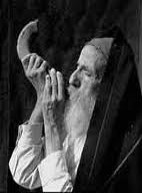
The ceremony at Kibbutz Hulda, in central Israel, in 1953, opened with a “tekia” – a shofar blast – that was commuted, according to the stage instructions, into flute music. There was then a prayer accompanied by piano and a hymn sung to music from Handel’s “Samson”: We send our blessings to the vineyards and the fields, the orchards and gardens, so that they may grant us a harvest and fill our silos.
It was the kibbutzniks doing the blessing; God was absent.
Then a choir of children sang, “A good year to every worker/ in the furrow and in the cement. A good and sweet year to every girl and boy!”
Today the kibbutz movement has largely been privatized, the old optimism and confidence gone. Beit Hashita, once a large and successful kibbutz that was among the flagship communities of the kibbutz movement, has encountered financial hardship and members have shelved the community’s socialism and closed its communal dining hall.
The kibbutzim no longer claim to be Israel’s vanguard and have generally abandoned Judaism to the Orthodox. But the staffers at the Kibbutz Institute for Holidays and Jewish Culture believe the kibbutz traditions still have much to offer those looking for a communal Judaism that isn’t necessarily religious – and there are, they believe, a growing number of people who match that description.
A kit that the institute produced last year included content for eight Jewish holidays – content that put Israeli poets like Yehuda Amichai on the same page as quotes from the Babylonian Talmud. Unlike the old kibbutz traditions, the new kits include the traditional kiddush and other prayers; God is no longer taboo.
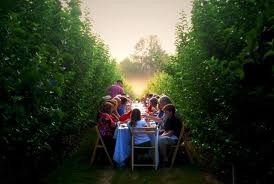
“More and more people are looking for activity outside the synagogue and are trying to develop a community that comes together to celebrate holidays,” said Stein. “Those looking for this kind of Jewish culture will find that this place is still very relevant today.”
Originally Published on The Times of Israel . Reprinted with permission.

